how to install shower tile
While shower niche shelves are space-saving wonders of the world, they are not a practical option for some tub surround/shower spaces.
 View in gallery
View in gallery
If your shower is on an exterior wall, for example, a niche shelf would eliminate much-needed exterior wall insulation. The plumbing wall, with its pipes and what-not, can be tricky if not impossible to maneuver into a niche shelf.
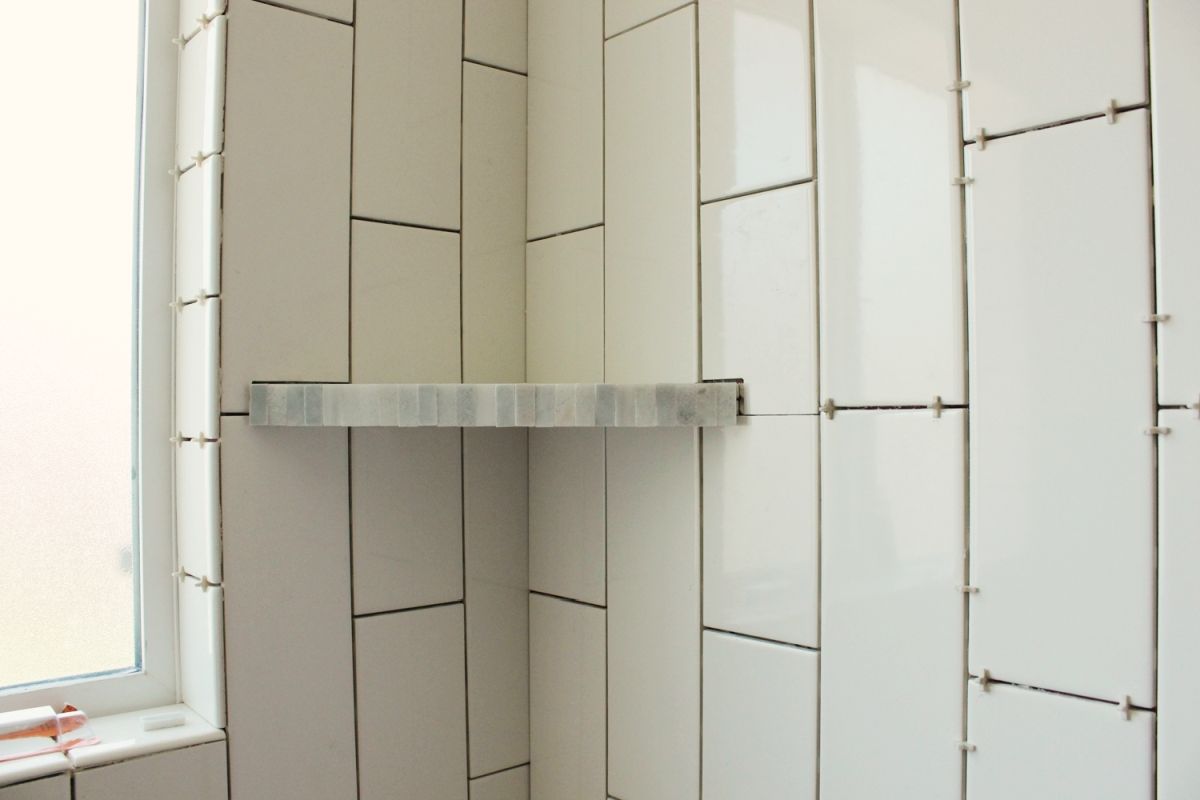 View in gallery
View in gallery
How to build a tile shower shelf
In these instances, a corner shelf might be year's best bet. Here is a tutorial to show one way you can easily install a functional and beautiful tile shelf for little cost and time as you're tiling your tub surround/shower.
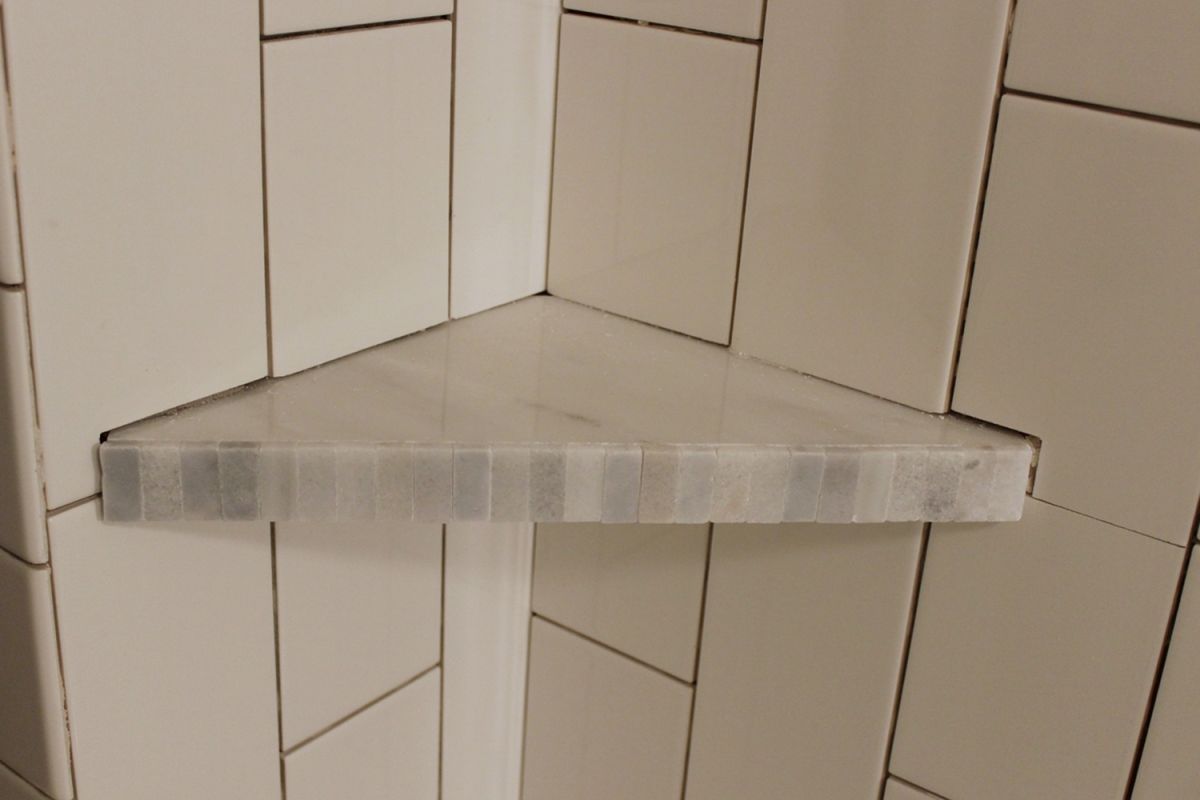 View in gallery
View in gallery
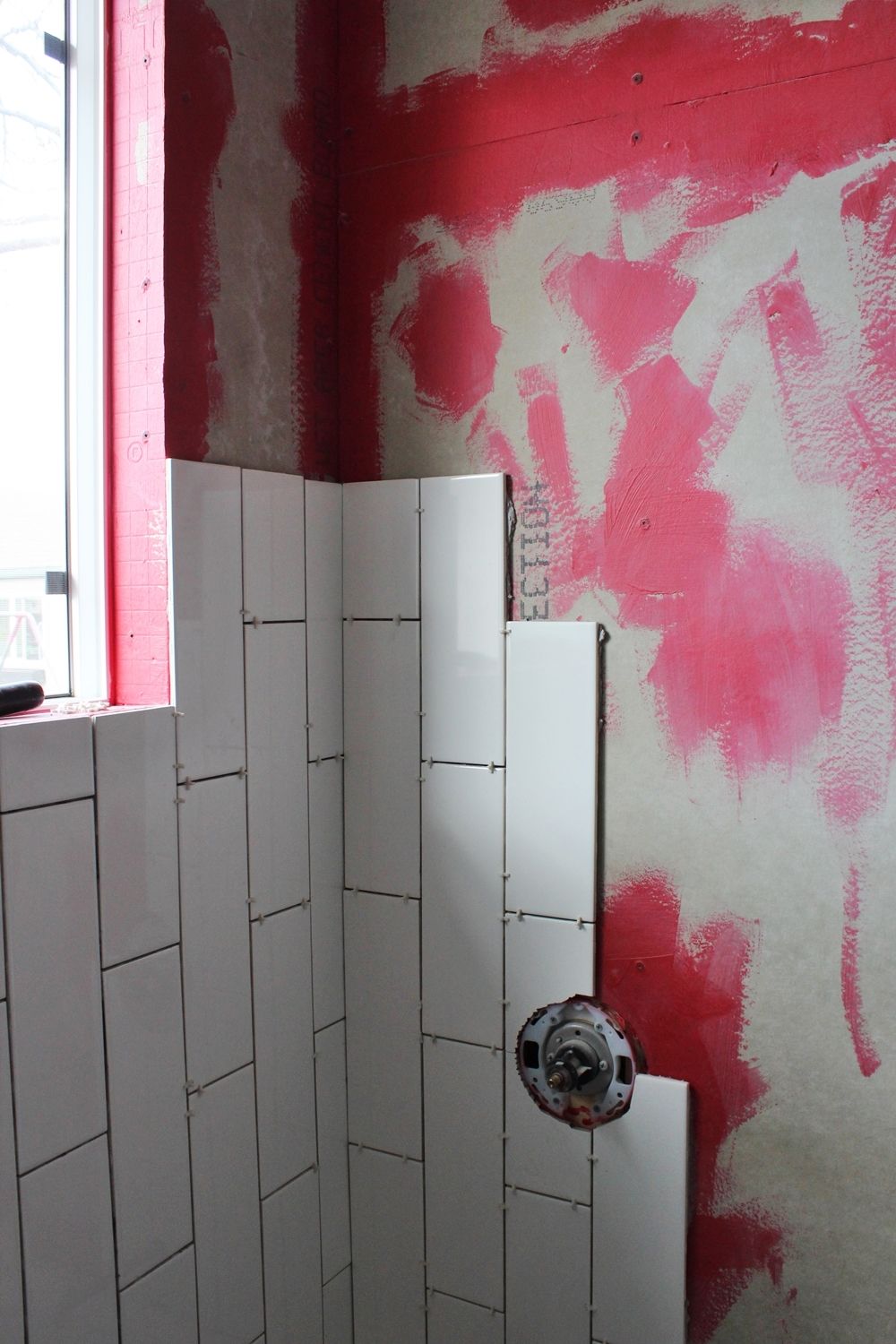 View in gallery
View in gallery
Step 1: How to choose the best corner
Begin by choosing the corner that would be most beneficial for your corner shower shelf. Tile, vertically, up to the level where you want your shelf to be. A good rule of thumb is to place a shower corner shelf at about the chest-height of the average user of the shower, although you should choose the height that makes the most sense for you and your space.
 View in gallery
View in gallery
Step 2: Tiling process
Tile enough columns, horizontally, up to that height so that the corner shelf piece can rest levelly and securely when placed.
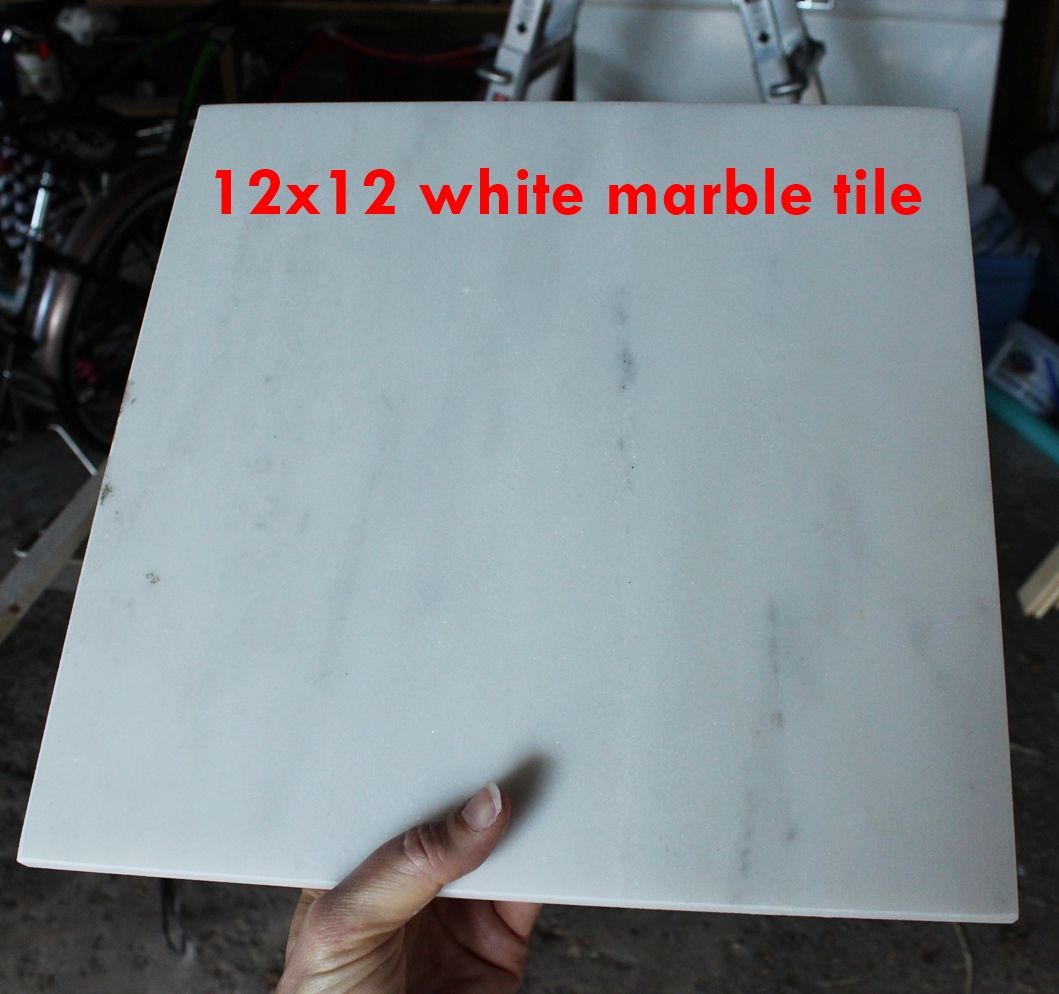 View in gallery
View in gallery
Step 3: Creating the shelf from a white marble tile
You can, of course, purchase a premade corner shelf and install it as per directions on the packaging. I wanted a simpler, more streamlined shelf than I could find in a premade format, so I decided to create my own shelf out of a 12" square white marble tile. I couldn't be happier with this decision.
 View in gallery
View in gallery
In a nutshell, we'll be cutting two triangles out of the square tile and in essence gluing them together (raw sides together) to serve as the shelf. It's always a good idea to consider water drainage when installing anything in a shower or tub (as in, "Where will the water go if and when it gets onto this surface?"), so I recommend cutting out a small triangle at the back of the shelf to allow for drainage. Measure 1" to 2" (depending on the size of your tile and the size of your desired drainage hole) from each side of one corner.
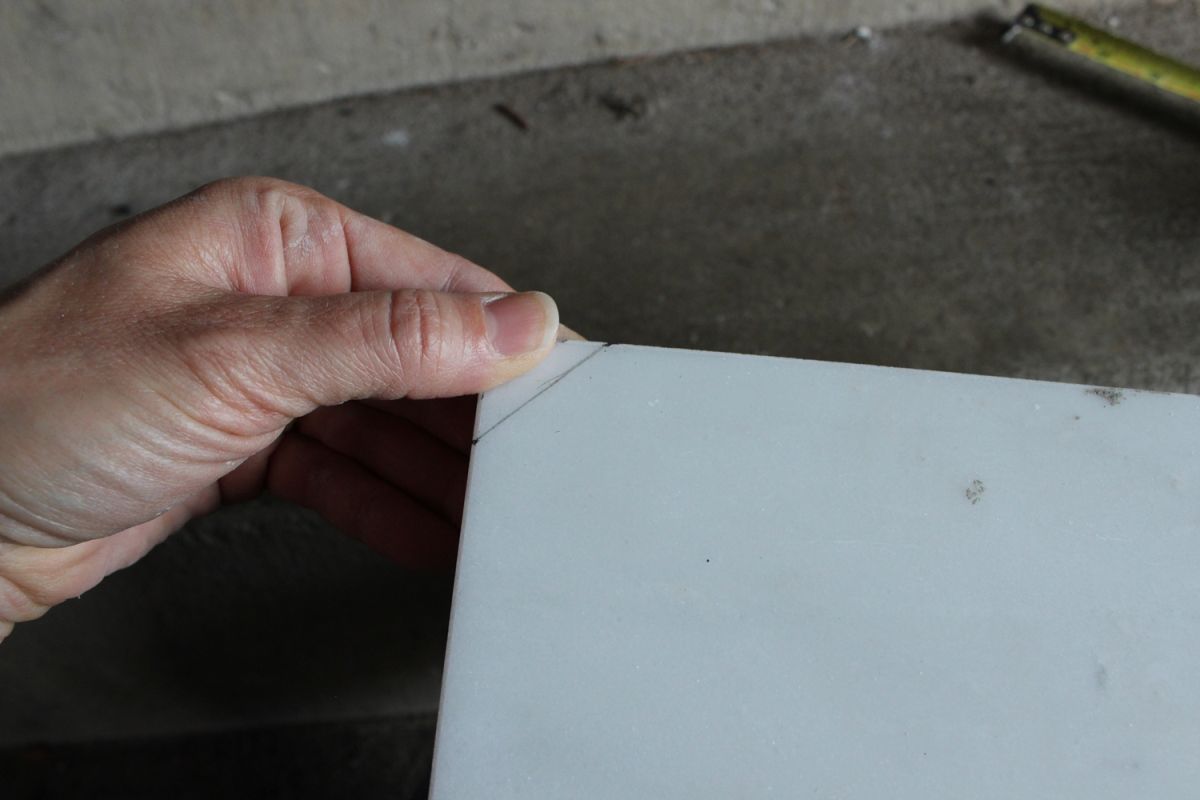 View in gallery
View in gallery
Connect the two dots with a diagonal line.
 View in gallery
View in gallery
Use your wet tile saw to slowly and carefully cut the notch section off your tile. (Here are more tips on using a tile wet saw.) Repeat on the opposite corner.
 View in gallery
View in gallery
Holding your tile with the newly cut notches on the sides, measure 1" down each edge from the two now-center corners. Draw two parallel lines connecting the dots (parallel with each other and also with your notches).
 View in gallery
View in gallery
Carefully use your wet tile saw to make the two longer cuts. You should now have two identical (almost) triangles.
 View in gallery
View in gallery
Ensure that the pieces are, in fact, identical by placing them with raw faces together, polished sides out. This is important so that the polished sides will be exposed as the top and bottom faces of your shower corner shelf.
 View in gallery
View in gallery
Apply a layer of thinset to the raw face of one of your tiles. Use a trowel to score it.
 View in gallery
View in gallery
Place the other tile triangle, raw side down, onto your thinset so it's like a tile sandwich. Ignore the sudden craving for oreos.
 View in gallery
View in gallery
Squeeze the two tiles together firmly, making sure that all edges align perfectly but paying particular attention to the front diagonal edges (the longest ones).
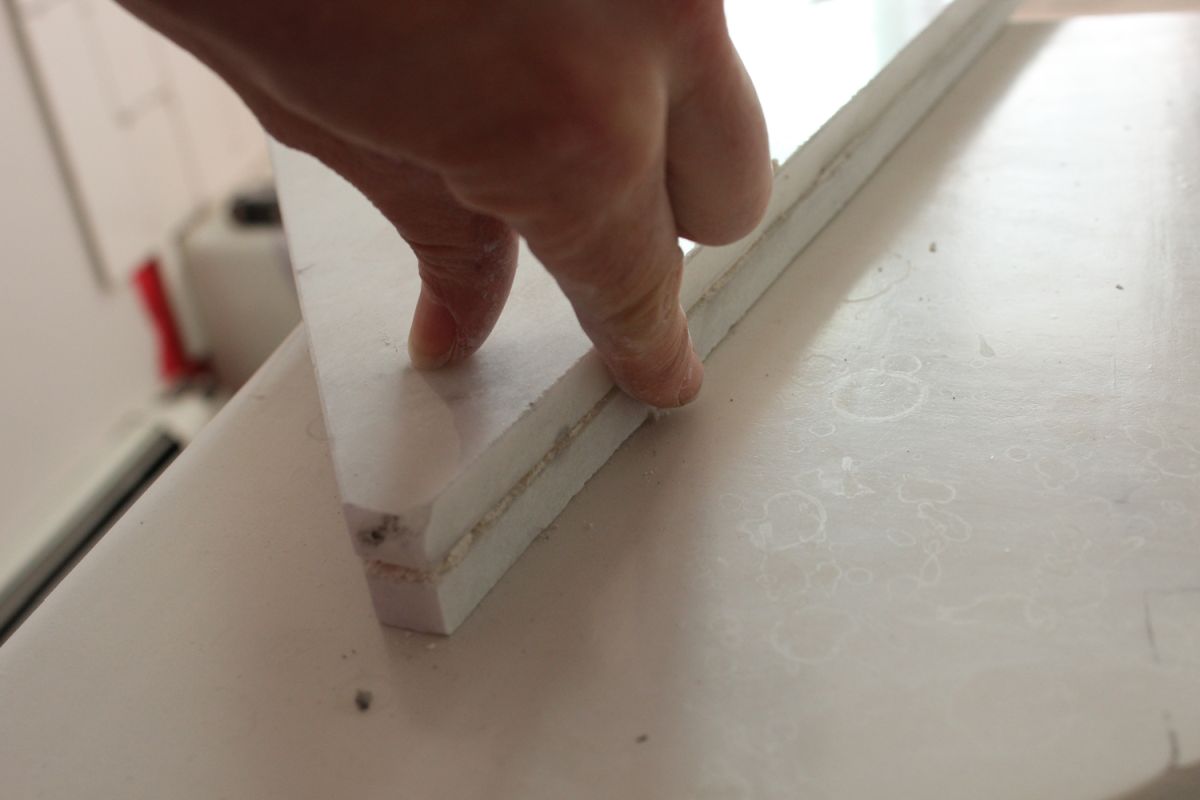 View in gallery
View in gallery
Taking care not to cut yourself, carefully run your finger along the front line of thinset to wipe away any protruding thinset.
 View in gallery
View in gallery
Step 4: Prepare the wall for triangle shelf
Set your sandwiched shelf aside momentarily while you apply thinset to the hardibacker directly above your predetermined shelf tile line.
 View in gallery
View in gallery
Score the thinset with your trowel teeth.
 View in gallery
View in gallery
Set your shelf directly into the troweled thinset at the level of your tile tops. (This photo shows the shelf heading toward the tiles; it is not yet touching the wall here at this level, although it appears to be doing so.)
 View in gallery
View in gallery
Step 5: Setting the shelf
Push the shelf firmly into the troweled thin-set, wiggling it in securely. When you are certain that it's adequately supported by the tiles below, push it inward toward the walls and downward onto the tiles.
Note: If you decided not to create a notch at the back of your tile, you will want to angle your shelf ever so slightly so the back corner is elevated so water will run off the front of the shelf into the shower.
 View in gallery
View in gallery
Wipe away any excess thinset under the shelf with your finger.
 View in gallery
View in gallery
Step 6: Continue tiling along
Measure, cut, and install tiles above the shelf. This is easier than it might seem. Simply keep the same pattern of tiles going as though the shelf wasn't there. To do this, subtract the height of the shelf sandwich from the tiles you're applying.
For example, in this photo, the next tile to be installed (placed next to the shown notched full-length tile) needs to reach exactly to the half-height of the adjacent full tile's height to maintain the pattern; thus, its actual height will be a half-height tile MINUS the height of the shelf. (The tile under the shelf is a true half-height tile.)Mathematically, this would look like:
lower tile height + shelf height/thickness + upper tile height = full tile height
 View in gallery
View in gallery
Continue installing the above-shelf tiles using that same mathematical equation, so that the grout line pattern remains consistent above and below the shelf (almost as though the shelf wasn't even there).
 View in gallery
View in gallery
Let everything dry completely before we tackle the front of the shelf.
 View in gallery
View in gallery
Step 7: filling with grout or add mosaic
You could, if you wanted, simply fill the center crack with grout when you grout the rest of your shower and call it good. The corner shower shelf is stable and secure at this point. However, I couldn't shake the feeling that with the marble tile slabs, this was a little too Oreo-esque for my shower décor tastes. (Nothing against that delicious sandwich cookie, of course.)
 View in gallery
View in gallery
I grabbed a pre-cut section of small mosaic marble tiles in my color scheme.
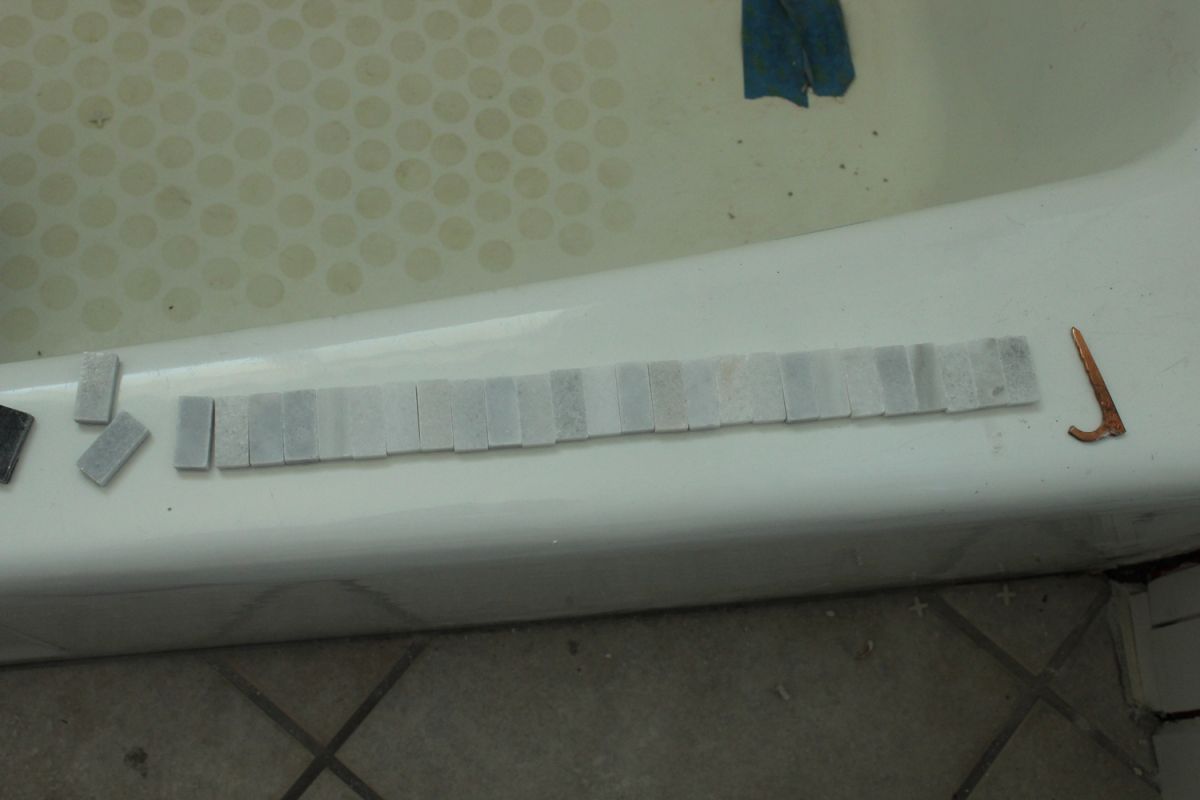 View in gallery
View in gallery
Step 8: How to apply the small mosaic tiles
Omitting the darkest tiles and keeping the lightest (so as to not draw too much attention to themselves), I peeled off each tile from the backing and laid them out in a straight line the same length as my corner shelf face.
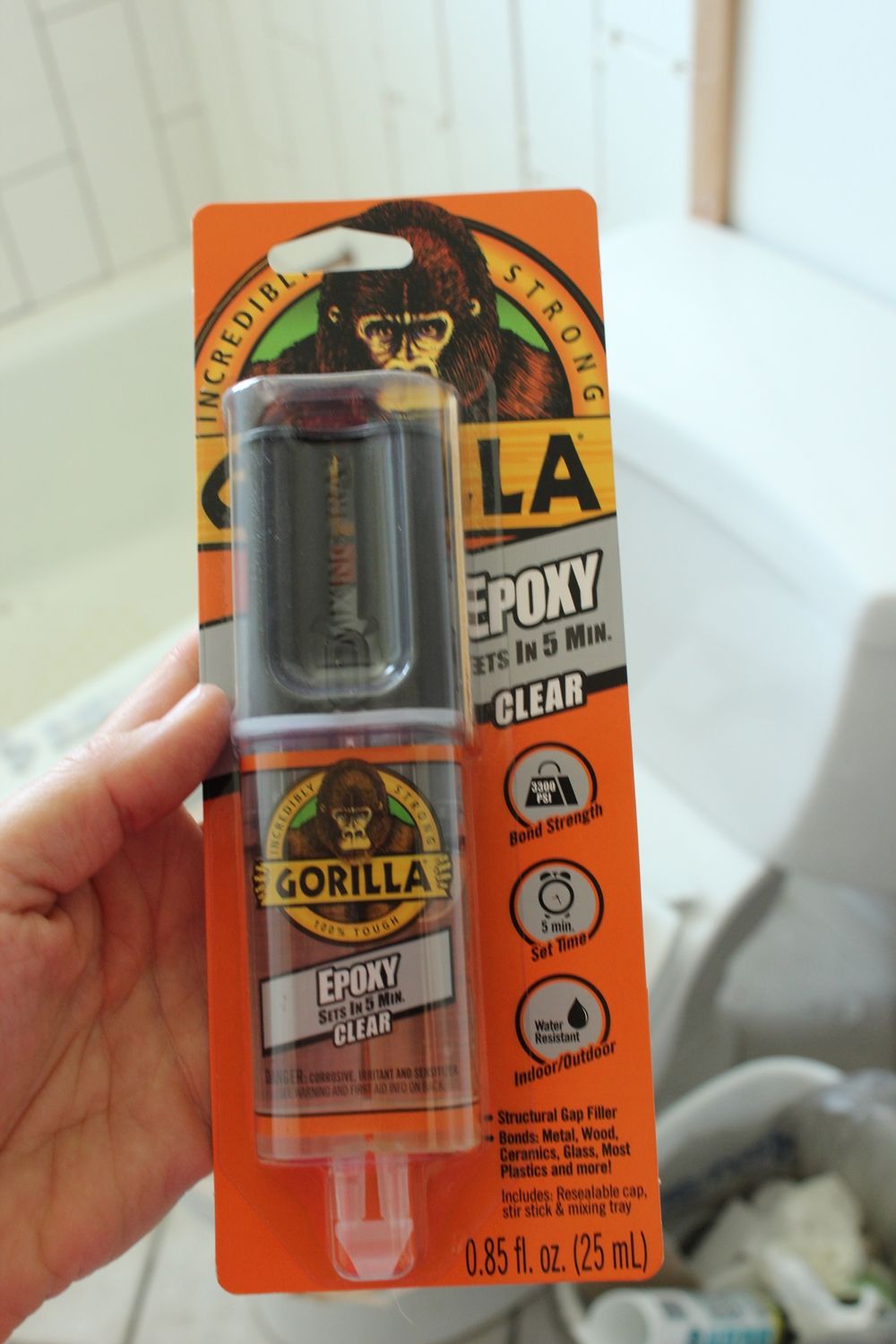 View in gallery
View in gallery
Step 9: Apply the water-resistant epoxy
After discussing at my local hardware store the pros and cons of adhering marble tiles to other marble tiles, I found some water-resistant epoxy that seemed perfect for the job.
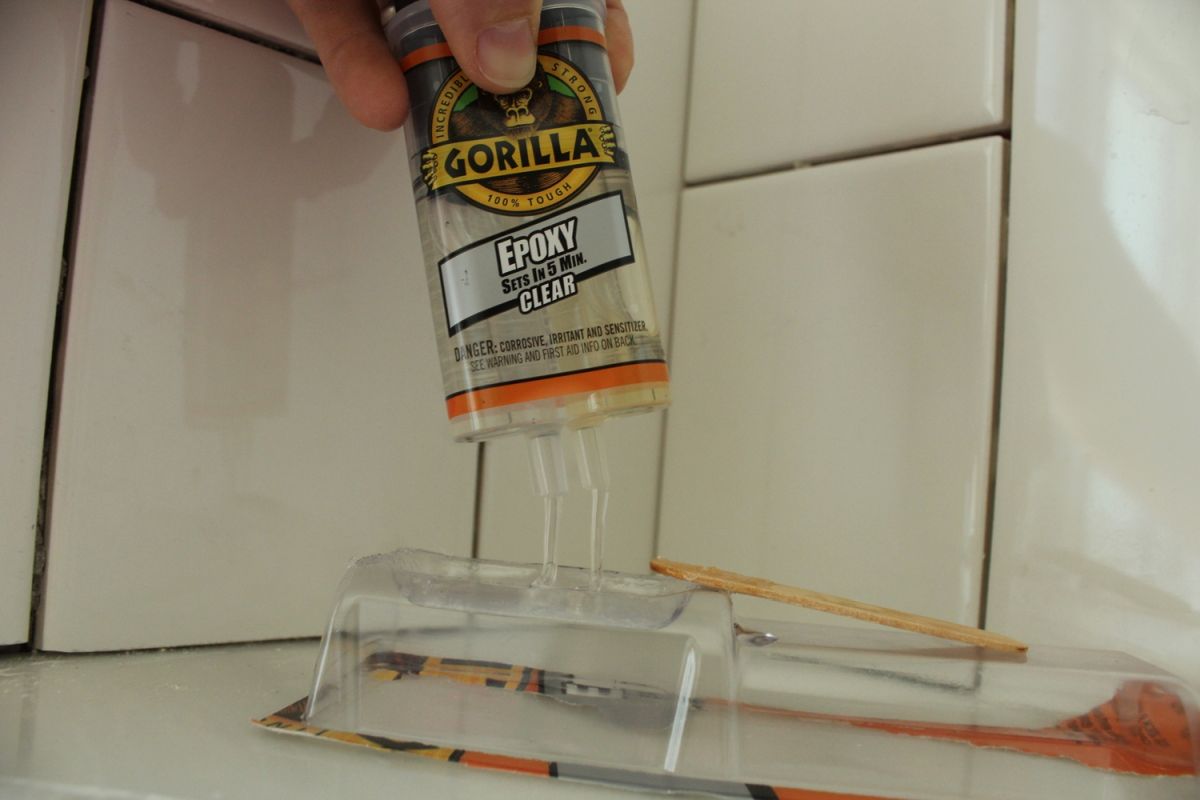 View in gallery
View in gallery
Pour the epoxy components, in equal amounts, into a disposable mixing tray. Just a small amount will do for now – the stuff begins to set in about 5 minutes, and you'll have to throw out anything you don't use within those minutes. (I ended up mixing two separate batches for this job.)
 View in gallery
View in gallery
Stir carefully and completely. Epoxy will only work when the two parts are together, so if you miss stirring in any sections, the bond strength will be significantly decreased, if not altogether nonexistent.
 View in gallery
View in gallery
Dab just a bit onto the back of your first tile. Epoxy has a tendency to expand, so a little bit goes a long way. Keep the adhesive away from the edges of your tile to minimize an oozing effect.
 View in gallery
View in gallery
Press your epoxy-backed tile onto the shelf face, keeping the top end of your face tile exactly even with (or very slightly lower) than the top edge of your shelf. You want water to be able to run off your shelf freely and not pool there.
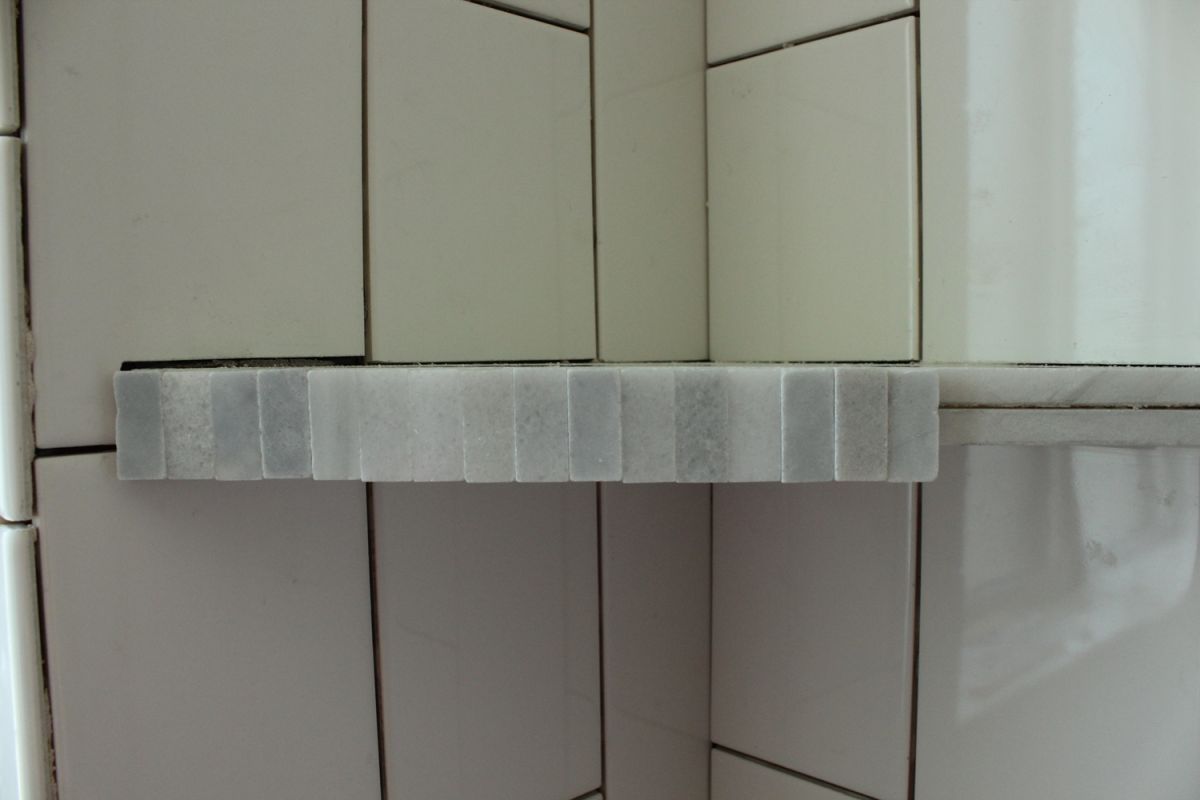 View in gallery
View in gallery
Move along quickly while also taking your time to make sure each tile is placed perfectly. Check back along your lineup every 30 seconds or so to make sure your tiles aren't slipping or sliding. If they are, immediately adjust them to be precisely lined up and press them toward your shelf again.
 View in gallery
View in gallery
Step 10: Applying all the mosaic tiles
Continue this process until your new tiles cover the front of your shelf. Keep watching and checking for the next 5-10 minutes for sliding tiles and adjust accordingly. This epoxy doesn't set immediately like some adhesives, and even when you think everything is secure, it could slide a minute later. Up until it's set, of course. Then it's solid.
 View in gallery
View in gallery
When the epoxy has completely set (24-72 hours later), apply a thin layer of sealant to the untreated edges. (This includes the tops, bottoms, and exposed backs if any, of your small marble fact tiles.)
A recommended sealant is 511 Impregnator (not shown), which is the same sealant to be used on the grout for the tub surround itself.
 View in gallery
View in gallery
I love the subtle variation of marble here, with a nod to the verticality of the entire shower/tub surround tile. It will look stunning with the grey grout we have planned. Simple, straightforward, and highly functional. This is an excellent way to incorporate storage into a shower space for very little cost or effort.
Note: The author is an experienced, although not professional, DIYer. Neither the author nor Homedit is responsible for any injury or damage that may be a result of following this tutorial.
how to install shower tile
Source: https://www.homedit.com/tile-shower-corner-shelf/
Posted by: hillhadoestabut.blogspot.com

0 Response to "how to install shower tile"
Post a Comment